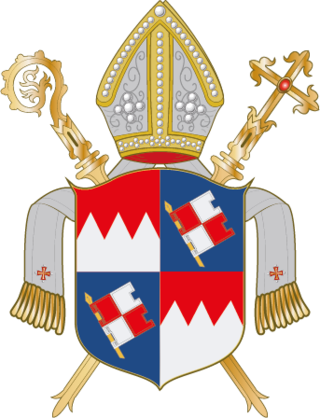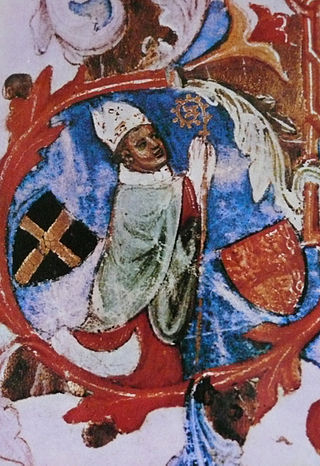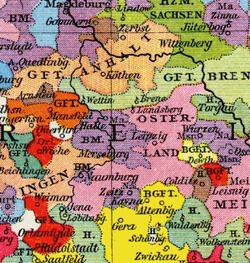
The Prince-Bishopric of Brandenburg was an ecclesiastical principality of the Holy Roman Empire from the 12th century until it was secularized during the second half of the 16th century. It should not be confused with the larger Diocese of Brandenburg established by King Otto I of Germany in 948, in the territory of the Marca Geronis east of the Elbe river. The diocese, over which the prince-bishop exercised only spiritual authority, was a suffragan diocese of the Archdiocese of Magdeburg, its seat was Brandenburg an der Havel.

The Archbishopric of Magdeburg was a Latin Catholic archdiocese (969–1552) and Prince-Archbishopric (1180–1680) of the Holy Roman Empire centered on the city of Magdeburg on the Elbe River.

The Prince-Bishopric of Würzburg was an ecclesiastical principality of the Holy Roman Empire located in Lower Franconia, west of the Prince-Bishopric of Bamberg. Würzburg had been a diocese since 743. As established by the Concordat of 1448, bishops in Germany were chosen by the canons of the cathedral chapter and their election was later confirmed by the pope. Following a common practice in Germany, the prince-bishops of Würzburg were frequently elected to other ecclesiastical principalities as well. The last few prince-bishops resided at the Würzburg Residence, which is one of the grandest Baroque palaces in Europe.

The Diocese of Lebus is a former diocese of the Catholic Church. It was erected in 1125 and suppressed in 1598. The Bishop of Lebus was also, ex officio, the ruler of a lordship that was coextensive with the territory of the diocese. The geographic remit included areas that are today part of the land of Brandenburg in Germany and the Province of Lubusz in Poland. It included areas on both sides of the Oder River around the town of Lebus. The cathedral was built on the castle hill in Lubusz and was dedicated to St Adalbert of Prague. Later, the seat moved to Górzyca, back to Lebus and finally to Fürstenwalde on the River Spree.

Naumburg Cathedral, located in Naumburg, Germany, is the former cathedral of the Bishopric of Naumburg-Zeitz. The church building, most of which dates back to the 13th century, is a renowned landmark of the German late Romanesque and was recognised as a UNESCO World Heritage Site in 2018. The west choir with the famous donor portrait statues of the twelve cathedral founders (Stifterfiguren) and the Lettner, works of the Naumburg Master, is one of the most significant early Gothic monuments.

The Bishopric of Merseburg was an episcopal see on the eastern border of the medieval Duchy of Saxony with its centre in Merseburg, where Merseburg Cathedral was constructed. The see was founded in 967 by Emperor Otto I at the same time in the same manner as those of Meissen and Zeitz, all suffragan dioceses of the Archbishopric of Magdeburg as part of a plan to bind the adjacent Slavic ("Wendish") lands in the Saxon Eastern March beyond the Saale River more closely to the Holy Roman Empire.

Murbach Abbey was a famous Benedictine monastery in Murbach, southern Alsace, in a valley at the foot of the Grand Ballon in the Vosges.
The table of years in art is a tabular display of all years in art, for overview and quick navigation to any year.
Wichmann von Seeburg was Bishop of Naumburg from 1150 until 1154 and Archbishop of Magdeburg from 1154 until his death. He became the first Magdeburg prince-archbishop in 1180

The Diocese of Würzburg is a Latin Church diocese of Catholic Church in Germany. The diocese is located in Lower Franconia, around the city of Würzburg, and the bishop is seated at Würzburg Cathedral. Founded in 741, the diocese lost all temporal power after the Napoleonic wars.

John of Neumarkt also Johannes von Neumarkt was Chancellor of Emperor Charles IV, appointed Bishop of Naumburg, Bishop of Litomyšl, Bishop of Olomouc and elected Bishop of Wroclaw. He was also known by his humanistic works.











